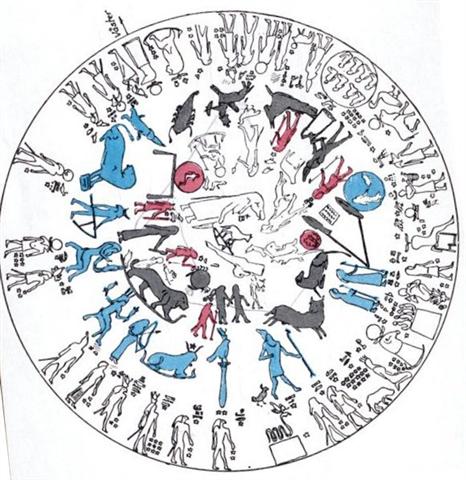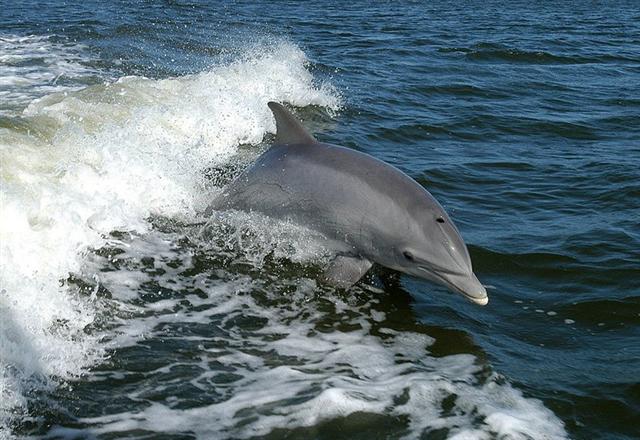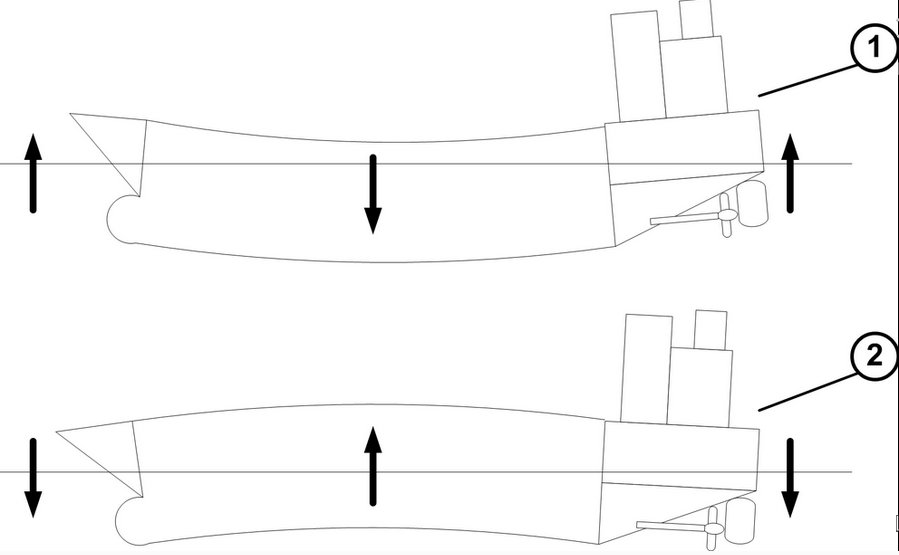This is complicated but also evidently important and therefore I will update my table once more, eliminating my earlier statement that all The Three Saads were ruled by stars in Aquarius:
In the Babylonian zodiac we can see how Aquarius could have been the Great One, standing on a Fish in a manner which resembles how the flow from the Urn of Aquarius goes down into the mouth of the Southern Fish:
The preceding station is the Goatfish which we can recognize as Capricornus. There is nothing between the Goatfish (Capricornus) and the Great One (Aquarius). And in the Dendera zodiac there is definitely no room for anything between Capricornus and Aquarius:
The circle describing our wellknown zodiacal constellations goes down below the sky equator from the northern autumn equinox to spring equinox, from Virgo to Pisces. However, this does not explain why there is another band of Babylonian constellations rising up above the ecliptic 'down in the Sea'. Not only Virgo (Frond and Furrow) is on the ecliptic circle but also the Scales, the Scorpion, and the Cargo Boat with Pabilsag, although these constellations are below declination 0º. Instead, the band rising up with Eagle & Dead Man from the region of Sagittarius (Cargo Boat with Pabilsag) must be the Milky Way. ... All 'change stations' are found invariably in two regions: one in the South between Scorpius and Sagittarius, the other in the North between Gemini and Taurus; and this is valid through time and space, from Babylon to Nicaragua. Why was it ever done in the first place? Because of the Galaxy, which has its crossroads with the ecliptic between Sagittarius and Scorpius in the South, and between Gemini and Taurus in the North ... ... Men's spirits were thought to dwell in the Milky Way between incarnations. This conception has been handed down as an Orphic and Pythagorean tradition fitting into the frame of the migration of the soul. Macrobius, who has provided the broadest report on the matter, has it that souls ascend by way of Capricorn, and then, in order to be reborn, descend again through the 'Gate of Cancer'. Macrobius talks of signs; the constellations rising at the solstices in his time (and still in ours) were Gemini and Sagittarius: the 'Gate of Cancer' means Gemini. In fact, he states explicitly (I,12.5) that this 'Gate' is 'where the Zodiac and the Milky Way intersect'. Far away, the Mangaians of old (Austral Islands, Polynesia), who kept the precessional clock running instead of switching over to 'signs', claim that only at the evening of the solstitial days can spirits enter heaven, the inhabitants of the northern parts of the island at one solstice, the dwellers in the south at the other ... Considering the fact that the crossroads of ecliptic and Galaxy are crisis-resistant, that is, not concerned with the Precession, the reader may want to know why the Mangaians thought they could go to heaven only on the two solstitial days. Because, in order to 'change trains' comfortably, the constellations that serve as 'gates' to the Milky Way must 'stand' upon the 'earth', meaning that they must rise heliacally either at the equinoxes or at the solstices. The Galaxy is a very broad highway, but even so there must have been some bitter millenia when neither gate was directly available any longer, the one hanging in midair, the other having turned into a submarine entrance ... The Delphin constellation is not in the Milky Way, but neither is it on the ecliptic. It is above not only the ecliptic but also above the sky equator, as if up in midair:
The position of Delphinus agrees approximately with that of the Babylonian Swine (also a mammal). Unlike fishes mammals need air to breathe:
But maybe we should think of Delphinus as a porpoise: "Porpoises; also called mereswine) are small cetaceans of the family Phocoenidae; they are related to whales and dolphins. They are distinct from dolphins, although the word 'porpoise' has been used to refer to any small dolphin, especially by sailors and fishermen. The most obvious visible difference between the two groups is that porpoises have shorter beaks and flattened, spade-shaped teeth distinct from the conical teeth of dolphins. The name derives from French pourpois, possibly from Medieval Latin porcopiscis (porcus pig + piscis fish; cf. classical porcus marīnus ('sea hog')." (Wikipedia) "Hogging. When the peak of a wave is amidships, causing the hull to bend so the ends of the keel are lower than the middle. The opposite of sagging. Also refers to a permanent distortion of the hull in the same manner caused, over time, by the bow and stern of a ship being less buoyant than the midships section. During the Age of Sail, shipwrights employed a number of different designs of braces to stiffen ships' hulls against this warping." (Wikipedia) "Since the maximum amount of cargo that a vessel can load often depends on whether her Plimsoll mark is submerged or not, it goes that sagging can cause a vessel to be unable to load the required cargo - especially if her loadline has already been reached prematurely due to the sag. This is taken into account when calculating cargo, by calculating what is called a '3/4 mean draft'. This is also called the 'Two thirds mean correction', directly derived from Simpson's first rule." (Wikipedia) How much cargo a (cargo) boat can carry depends on whether its hull has been strengthened midships or not:
| ||||||||||||||||||||||||||||||||||||||||||||||||||||||||||||




